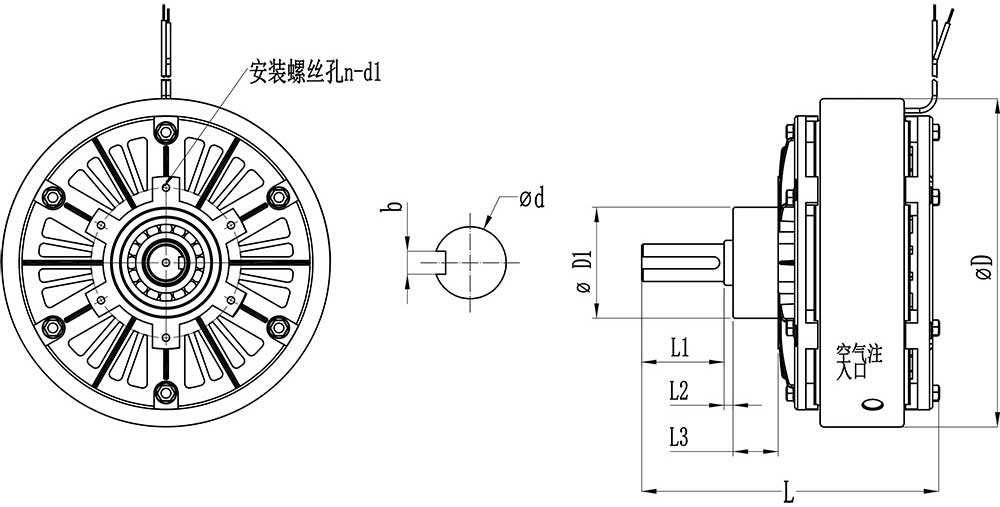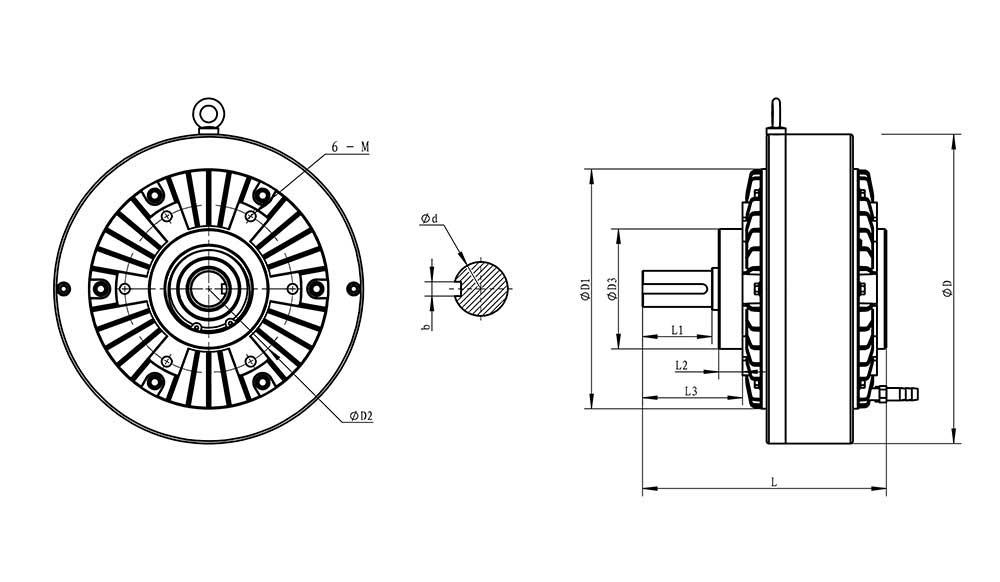Magnetic particle clutches and magnetic particle brakes are based on electromagnetic principles and use magnetic particles to transmit torque. There is a linear relationship between the excitation current and the transmission torque. It can transmit a certain torque irrespective of slip and has the advantages of fast response speed, simple structure, no pollution, no noise, no impact vibration, and energy saving. It is an automatic control element with multi-purpose and superior performance.
When the excitation current remains unchanged, the torque transmitted by it is not affected by the differential speed (slip speed) between the transmission part and the driven part, that is, there is no difference between the static torque and the dynamic torque. Therefore, constant torque can be stably transmitted. If this feature is used for tension control, the user only needs to adjust the size of the excitation current, and then the required torque can be accurately controlled and transmitted, so as to easily and effectively achieve the purpose of controlling the coil tension.

Scope of application
Due to the above characteristics of magnetic particle clutches and brakes, they have been widely used in papermaking, printing, plastics, rubber, textiles, printing and dyeing, wire and cable, metallurgy and other related coiling processing industries. Unwinding and winding tension control. In addition, the magnetic powder clutch can also be used for buffer starting, overload protection, speed regulation, etc. Magnetic particle brakes are also often used for dynamometric loading and braking of transmission machinery.
Selection
The selection of magnetic particle clutch is generally selected based on the maximum torque required to be transmitted, and at the same time, attention should be paid to ensure that the actual slip power is less than the allowable slip power of the magnetic particle clutch.
Calculation formula
- Actual slip power P=2×3.14×M×n/60=F·V (unit: W)
- In the formula: M —– Actual working torque (N m) F —– Tension (N)
- n —– Slip speed (r/min) V —– Linear speed (m/s)
In the case of no speed change mechanism, the product of the maximum tension required by the winding material and the maximum winding radius should be less than the rated torque of the magnetic particle brake. In addition, the selection of the magnetic powder clutch is also related to its position: on the premise of matching the slip power, if the magnetic powder clutch is placed in the high-speed stage, a smaller size clutch can be selected, and its volume and cost will be reduced accordingly. When the small size magnetic powder clutch cannot be matched and a larger magnetic powder clutch is required, it should be placed in the middle or rear of the transmission mechanism to increase the working torque and reduce the slip speed.
When the heat dissipation condition of the magnetic particle clutch is constant, its slip power is a certain value, so its actual working torque and speed can compensate for each other, that is, when the slip speed increases, the allowable torque will decrease accordingly, but the maximum speed should not be higher than its permissible speed.
5 Important Notes for Magnetic Particle Brakes/Clutches
- The magnetic particle clutch/brake in normal operation, especially the newly installed clutch/brake, should pay attention to its surface temperature should not exceed 80 ℃, the water-cooled brake should not exceed 90 ℃, and forced air cooling should not exceed 60 ℃.
- For the water cooling type magnetic particle clutch/brake, the surface temperature should not be lower than 50 ℃ to avoid condensation. When the surface temperature is too low, the water supply should be appropriately reduced.
- During the operation of the water and air cooling type magnetic particle clutch/brake, the water and air cannot be interrupted. If it is not guaranteed that the water supply and air will not be interrupted, a water and air protection device should be installed.
- If circulating water is used for cooling magnetic particle clutch/brake, it is recommended to add anti-corrosion agent to the water and replace the clean water every other month.
- Magnetic particle life varies depending on usage conditions. When the torque drops below 70% of the rated torque, the magnetic powder can be considered to be aged and should be replaced. However, it is sometimes difficult to determine the torque value at the work site. At this time, the method of appropriately increasing the excitation current can be used to meet the requirements. When the current reaches the rated value and still cannot meet the user, replace the magnetic powder. magnetic particle clutch/brake the procedure for replacing magnetic powder is as follows (small and medium-sized clutch/brake)
